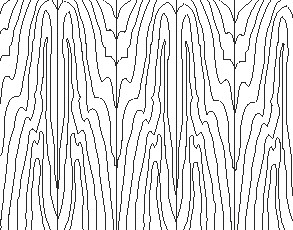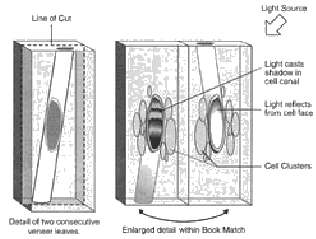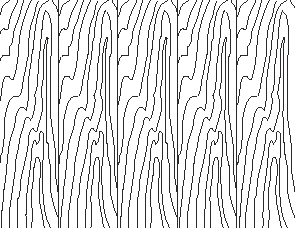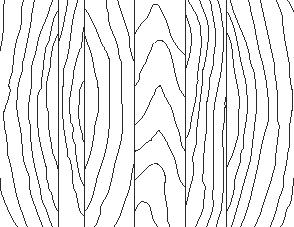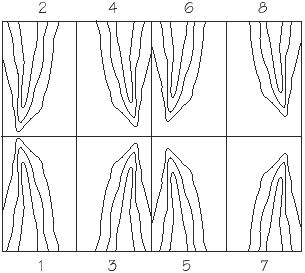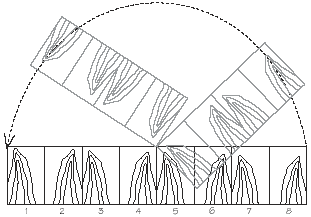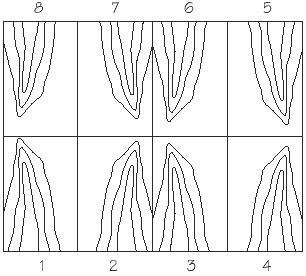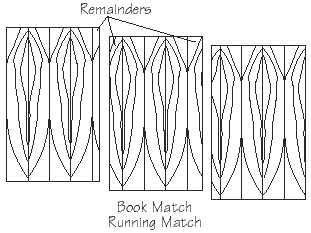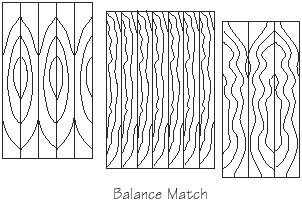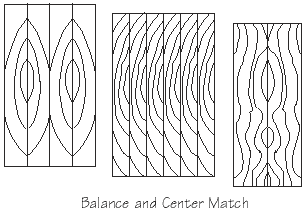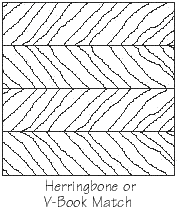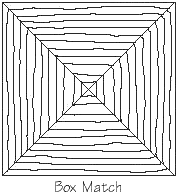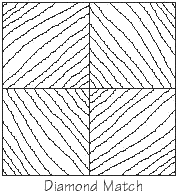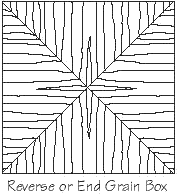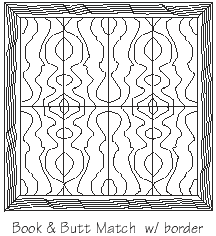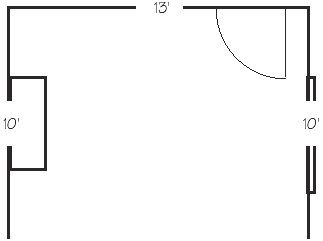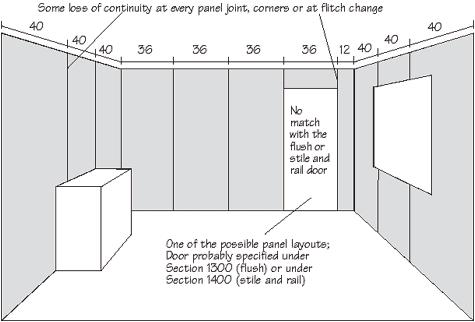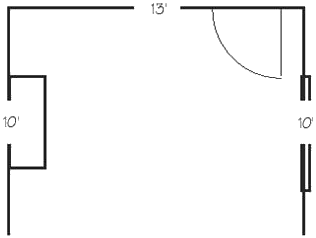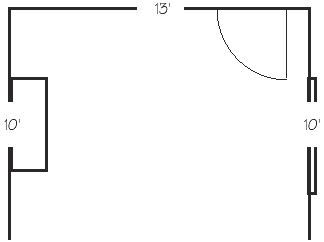Technical Info
Use Permissions
“The following technical information about veneer matching, and sequence matching is part of the Architectural Woodwork Institute’s “Architectural Woodwork Standards, 1st Edition” ©Architectural Woodwork Institute 2009, and are used with permission.”
Decorative Veneer Cutting Methods
Five principles cutting methods are used to produce different visual effects from the wood species. Logs of the same species cut by the different methods, will produce veneers with and entirely different look.
The log is mounted centrally in the lathe and turned against a razor sharp blade, like unwinding a roll of paper. Since this cut follows the logs angular growth rings, a multi-patterned grain marking is produced. Rotary cut veneer is exceptionally wide.
The half log, or flitch, is mounted with the heart side flat against the flitch table of the slicer and the slicing is done parallel to a line through the center of the log. This produces a distinct figure.
The quarter log, or flitch, is mounted on the flitch table so that the growth rings of the log strike the knife at approximately right angles, producing a series of stripes, straight in some woods, varies in others.
Rift veneer is produced in the various species of Oak. Oak has medullary ray cells which radiate from the center of the log likes curved spokes of a wheel. The rift or comb grain effect is obtained by cutting at an angle of about 15 degrees off the quartered position to avoid the flake figure of the medullary rays.
A variation of rotary cutting. Segments, or flitches, of the log are mounted off center on the lathe. This results in a cut slightly across the annular growth rings, and visually shows modified characteristics of both rotary and plain sliced veneers.
Matching Between Adjacent Veneer Leaves
It is possible to achieve certain visual effects by the manner in which the leaves are arranged. As noted, rotary cut veneers are difficult to match; therefore most matching is done with sliced veneers. The matching of adjacent veneer leaves must be specified. Special arrangements of leaves such as “diamond” and “box” matching are available. Consult your woodworker for choices. The more common types are:
Book Matching
The most commonly used match in the industry. Every other piece of veneer is turned over so adjacent pieces (leaves) are opened like the pages of a book.
Visual Effect :
Veneer joints match creating a symmetrical pattern. Yields maximum continuity of grain. When sequenced panels are specified, prominent characteristics will ascend or descend across the match as the leaves progress from panel to panel.
Barber Pole Effect in Book Match
Because the tight and loose faces alternate in adjacent pieces of veneer, they may accept stain differently, and this may result.
Slip matching
Often used with quarter sliced and rift sliced veneers. Adjoining leaves are placed (slipped out) in sequence without turning, resulting in all the same face sides being exposed.
Visual Effect :
Grain figure repeats; but joints do not show visual grain match.
**Note: The lack of grain match at the joints can be desirable. The relatively straight grain patterns of quartered and rift veneers generally produce pleasing results and a uniformity of color because all faces have the same light refraction.
Random Matching
Veneer leaves are placed next to each other in a random order and orientation, producing a “board-by-board” effect in many species.
Visual Effect :
Casual or rustic appearance, as though individual boards from a random pile were applied to the product. Conscious effort is made to mismatch grain at joints.
Degree of contrast and variation may change form panel to panel. This match is more difficult to obtain than book or slop match. And must be clearly specified and detailed.
End Matching
Often used to extend the apparent length of available veneers for high wall panels and long conference tables. End matching occurs in two types.
Architectural End Match
Leaves are individually book (or slip) matched, first end-to-end and then side-to-side, alternating end and side.
Visual Effect :
Yields best continuous grain patterns for length as well as width.
Continuous End Match
Leaves are individually book (or slip) matched, separate panels are stacked in sequenced order, either horizontally or vertically in the elevation. (Horizontal sequence illustrated.)
Visual Effect :
Yields sequenced grain patterns for elevations, with pleasing blend of figure horizontally or vertically.
Panel End Match
Leaves are book (or slip) matched on panel subassemblies, with sequenced subassemblies end matched, resulting in some modest cost savings on projects where applicable.
Visual Effect
For most species, yields pleasing, blended appearance and grain continuity.
Matching within Individual Panel Faces
The individual leaves of veneer in a sliced flitch increase or decrease in width as the slicing progresses. Thus, if a number of panels are manufactured from a particular flitch, the number of veneer leaves per panel face will change as the flitch is utilized. The manner in which these leaves are “laid up” within the panel requires specification, and is classified as follows:
Running Match
Each panel face is assembled form as many veneer leaves as necessary. This often results in a non-symmetrical appearance with some veneer leaves of unequal width. Often the most economical method at the expense of aesthetics, it is the standard for Custom grade and must be specified for other Grades, Running matches are seldom “sequenced and numbered” for use as adjacent panels. Horizontal grain “match” or sequence cannot be expected.
Balance Match
Each panel face is assembled from veneer leaves of uniform width before edge trimming. Panel is may contain an even or odd number of leaves, and distribution may change from panel to panel within a sequenced set. While this method is the standard for Premium Grade, it must be specified for other Grades, and it is the most common assembly method at moderate cost.
Balance and Center Match
Each panel face is assembled of an even number from veneer leaves of uniform width before edge trimming. Thus, there is a veneer joint in the center of the panel, producing horizontal symmetry. A small amount of figure is lost in the process. Considered by some to be the most pleasing assembly at a modest increase in cost over Balance Match.
Fire-Retardant Panels
Flame Spread Classification
The various codes utilize flame spread classifications for wood and other materials. It is the responsibility of the specifier to determine which elements, if any, of the woodwork require special treatment to meet local codes. In most codes, the panel products used to fabricate casework and furniture are not regulated. For more detailed information, please refer to the Fire Code Summary in the Appendix and your local Code Book.
Flame Spread Factors
A. Core
The fire rating of the core material determines the rating of the assembled panel. Fire-retardant veneered panels must have a fire-retardant core. Particleboard core is available with a Class I (Class A) rating and can be used successfully with veneer or rated high pressure decorative laminate faces. MDF (Medium Density Fiberboard) is available with a fire rating in some markets.
B. Face
Some existing building codes, except where locally amended, provide that facing materials 1/28″ or thinner are not considered in determining the flame spread rating of the panel. If state and local codes move toward adoption of the International Building ode provision, it is possible that the 1/28″ exemption may not be available.
Note: In localities where basic panel building codes have been amended it is the responsibility of the specifier to determine whether the application of the facing material specified will meet the code.
Traditionally, face veneers are not required to be fire-retardant treated, and such treatment will adversely affect the finishing process.
Special Matches
There are regional variations in the “names” of the following veneer leaf matching techniques. It is strongly recommended the design professional use both names and drawings to define the effect desired.
Methods of Matching Panels
Veneered panels used in casework or paneling in the same area may be matched to each other. This important component of the project must be carefully detailed and specified. The natural growth patterns of the tree will cause the figure on the sequential panels to ascend, descend, or show a ” grain progression” as the eye moves form panel to panel. These illustrations were developed in Imperial measure and have not been converted for this edition. The four common methods are:
1. Pre-manufactured Sets – Full Width
These are one step above stock plywood panels, usually made and warehoused in4″ x 8″ or 4′ x 10′ sheets in sequenced sets. They may be produce from a single flitch or apart of a flitch, usually varying in number from 6 to 12 panels. If more than one set is required, matching between the sets cannot be expected. Similarly, doors or components often cannot be fabricated from the same flitch materials, resulting in noticeable mismatch. This is often the most economical type of special panel products.
2. Pre-manufactured Sets – Selectively Reduced in Width
These are panels just like those in the previous illustration, usually made and warehoused in 4″ x 8″ or 4′ x 10′ sheets in sequenced sets. They are often selected for continuity, recut into modular width, and numbered to achieve the appearance of greater symmetry. If more than one set is required, matching between the sets cannot be expected. Similarly, doors or components often cannot be fabricated from the same flitch materials, resulting in noticeable mismatch.
3. Sequence-Matched Uniform Size Set
These sets are manufactured for a specific installation to a uniform panel width and height. If more than one flitch is required to produce the required number of panels, similar flitches will be used. This type of panel matching is best used when panel layout is uninterrupted, and when the design permits the use of equal width panels. Some sequence will be lost if trimming is required to meet field conditions. Doors and components within the wall cannot usually be matched to the panels. Moderate in cost, sequenced uniform panels offer a good compromise between price and aesthetics.
4. Blueprint-Matched Panels and Components
This method of panel matching achieves maximum grain continuity since all panels, doors, and other veneered components are made to the exact sizes required and in the exact veneer sequence. If possible, flitches should be selected that will yield sufficient veneer to complete a prescribed area or room. If more than one flitch is needed, flitch transition should be accomplished at the least noticeable, predetermined location. This method requires careful site coordination and relatively long lead times. Panels cannot be manufactured until site conditions can be accurately measured and detailed. This panel matching method is more expensive and expresses veneering in its most impressive manner.
© 2003 AWI/AWMAC – 8th Edition Quality Standards











